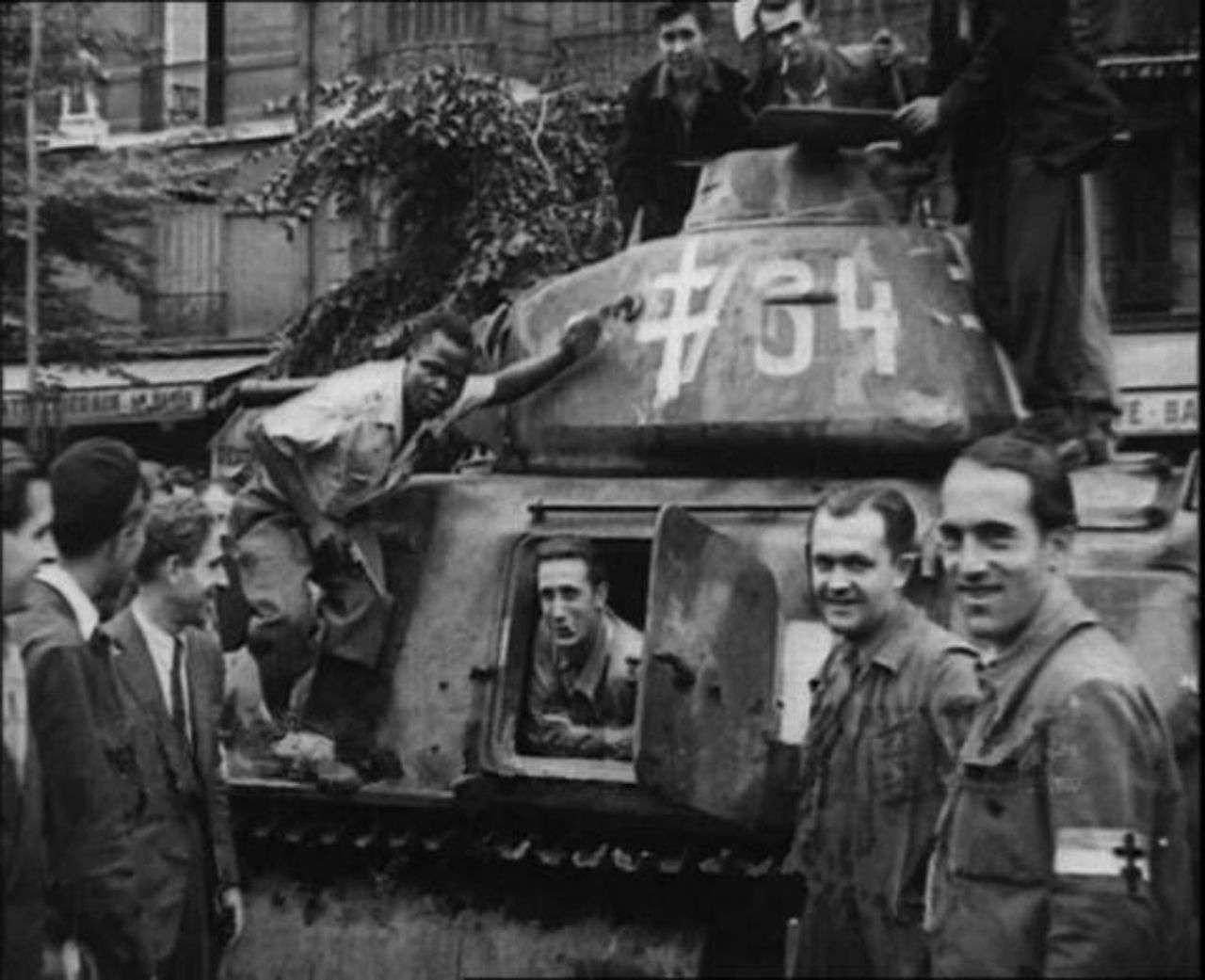George Dukson, born in French Equatorial Africa (now Gabon), decided to join the French army in Europe immediately after the Second World War broke out. Shortly before the French capitulation, he was taken prisoner by the German army. and after spending two years in a German prisoner-of-war camp he successfully escaped.
Dukson returned to France, entering the underground resistance movement in Paris and where he played an important role in the resistance. During the liberation of the city of Paris, he rose through the ranks to gain the command over a group of resistance fighters. With just a few revolvers and grenades, Dukson and his comrades succeeded in capturing a German tank. On 21 August he was hit in his arm by a bullet, but Dukson kept fighting until Paris was liberated.
On 26 August General Charles de Gaulle, leader of the Free French Forces, marched with his troops in a victory parade through the city. At the request of the Allies, only white soldiers had been involved with the liberation of the city, therefore the parade was therefore also white, despite a huge part of the French army existing of non-white people. However, George gained a spot in the parade and is seen near General de Gaulle in several pictures.
After the Liberation of Paris, Dukson started to trade on the black market, until he was arrested. He was shot as he attempted to flee from his arrest and died from his wounds on 11 November 1944.
